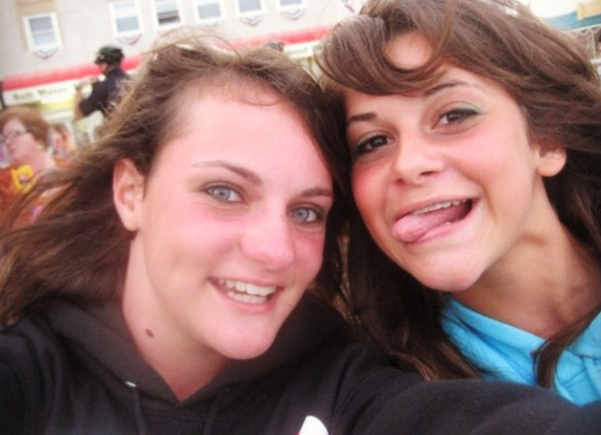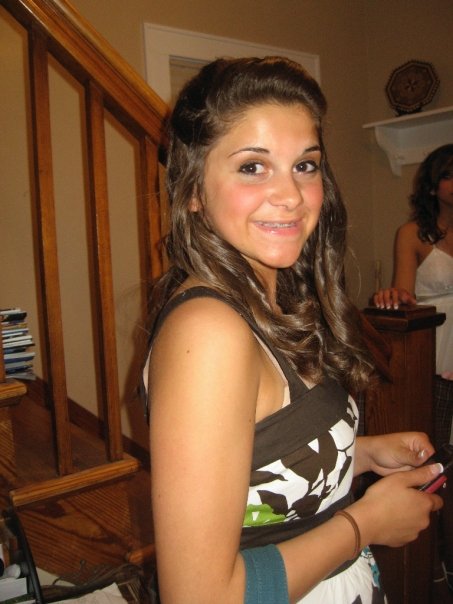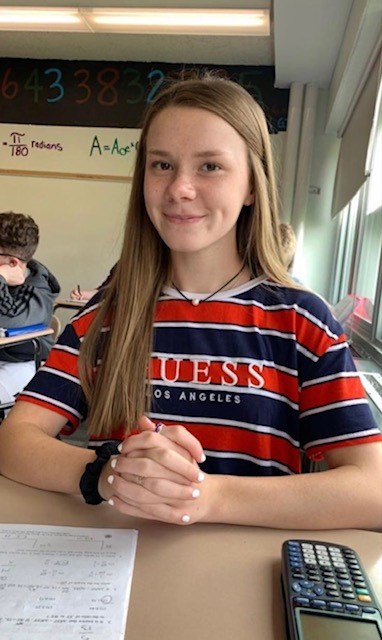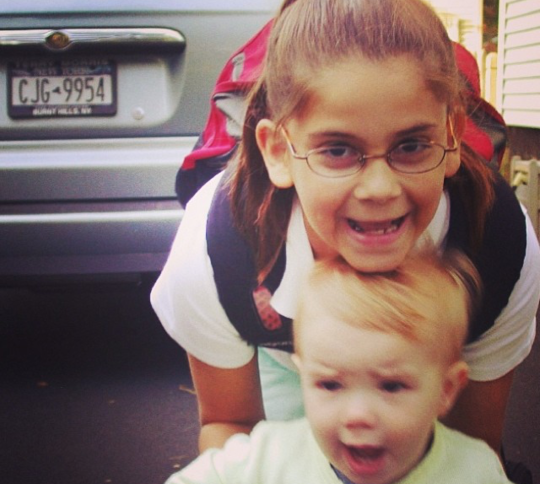Why Are Tweens No Longer Ugly?
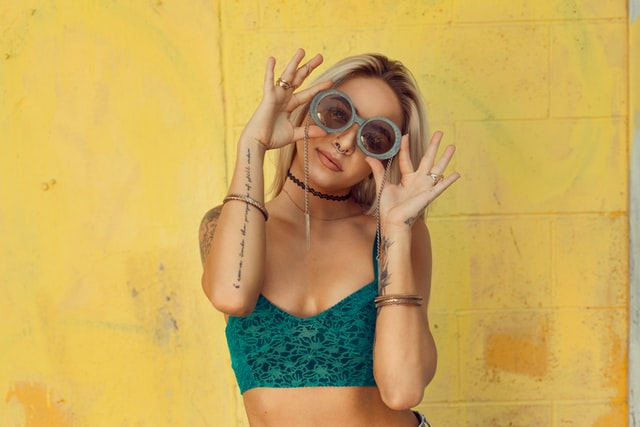
Recipe for authentic 2008 pre-teen
Ingredients:
2 cups all-purpose hormones, bleached and sifted
40 cups acne medication, kept at room temperature
3 tablespoons sparkles, rough chop
6 pieces cheap costume jewelry (preferably plastic, the larger the better)
1 Gap back-to-school sale
Directions:
In a large bowl, combine hormones and acne medication. In a separate bowl, stir together costume jewelry and Gap sweatshirts. Stir in 2 tablespoons sparkles until well blended, place the rest in a separate bowl. Stir jewelry mixture into hormone mixture; just to moisten. Pour batter into prepared 6th grader.
Let rest for 1 summer vacation to harden.
Add remaining sparkles as garnish on eyelids, hair, lips, etc. Serve irritable, annoying, and moody.
Sophia Constantino (left) at age 13
Middle school, for those of us who went through the American school system, was a tragic mix of hormones, homework, and hand-me-downs. I was not cute. On any given day, I was rocking Teva sandals (before they were cool again), LimitedToo shirts with far too many sparkles, and bangs I decided to cut myself on a whim, despite advice from my parents, my friends, the school nurse, and literally everyone else that they did not work for the shape of my face.
It seems that preteens and teenagers nowadays skip right over this disastrous stage of development. My 17-year-old sister was never ugly or awkward. And as much as I want to take credit for this fact by having set a great example for her, I think social media played a huge part. TikTok, Instagram, and YouTube provide vast databases for finding lessons on how not to be eccentric like I was.
How to Do a Smoky Eye
How to Straighten Your Hair
How to Dress When You Think Your Boyfriend Wants to Dump You
How to Be Smart Without Joining Book Club and Becoming a Social Pariah
Research has since vilified social media in more ways than one, and as someone who didn't have an Instagram page until my senior year of high school, I consider myself lucky for potentially skirting the cognitive, social, and psychological trauma that it is said to have imposed on the younger generation (depression, anxiety, ADHD, etc.). Instagram in particular completely warps our self-image, and it can be especially detrimental for the malleable minds of Gen-Z pre-teens and teens. This age group has the ability to constantly compare themselves to their peers in ways I did not at their age.
Don't get me wrong, I still had raging jealousy over Gina Carson's acne-free face and naturally blonde hair at the time, but now social media gives kids the option to hate-stalk their own Gina Carson at any time. And Gina can fill up her social pages with only the best filtered and photoshopped content for her peers to look at.
Sophia in 2010 at age 14 (above), her sister in 2018 at age 14 (below)
Our social media selves should be viewed in the same way we might view ourselves refracted in a body of water. A bit cloudy, distorted, and blemish-free. Still, the grass-is-greener-syndrome hits us hard on social media. If we see someone posting about their perfect life, we automatically compare our lives to it. The reality, as we hopefully all know by now, is that the girl who bullied you in high school is not really that happy. Her boyfriend works too much, and she had to force him to take those cute pictures she posted of them at the pumpkin patch.
For teens, who spend an average of almost 30 hours a week on social media, the toxic idea of comparison is compounded by constant exposure. Anything a teen posts must also match up to the posts of their peers. Self-worth is now measured in likes, comments, and shares and if a post does not get as much positive engagement as another's, their already fragile self-esteem can further bend.
As if our own self-worth was not already out of our hands, enter: online dating. The idea that at any given time, you could match with ten (hopefully) single people without lifting a finger is convenient and exciting, but intimidating when thinking about that fact also being true for your matches. Split-second decisions are made based on proximity and physical attractiveness, and for teenagers who are hormonal and have no idea want they want yet, this is a frightening notion. Similarly to their social media profiles, they must present the most perfect versions of themselves on Bumble, Tinder, Hinge, etc., or be thrown aside for the 370 million others using these platforms.
Teenagers can't be ugly and awkward these days. There is no margin for error.
To me, this is detrimental in more than one way. Having an ugly phase taught me to laugh at myself, gave me a positive attitude toward and appreciation of individuality, and let me form genuine friendships and interests, uninfluenced by the latest social trends or hot TikTokers doing dances that I will never be able to replicate. We had High School Musical instead, to teach us that No! Being cool was not just about playing basketball, but having a wide range of interests to make yourself well-rounded!
Sophia and her sister in 2007
Like Troy Bolton, I had a long list of hobbies that today, probably would've ruined even the hottest, least awkward teenager's social status. But I enjoyed them, just like I enjoyed my snap-off Adidas track pants and sparkly blue eyeshadow.
The difference was social media was not there to clock me in the face with my insecurities every time I opened Instagram and saw Gina Carson's perfect outfits and makeup.

